Related Tags
Two Notes Genome review – could this no-nonsense guitar plugin be all you need?
A slightly slimmer selection of virtual amps and effects paired with flexible expandability make Genome a unique and intriguing guitar software

Two Notes Genome
Review Overview
Our rating
9
Our verdict
⊕ Excellent third-party compatibility
⊕ Base plugin is very affordable
⊖ Effects library smaller than some alternatives
⊖ Price of expansions could rack up depending on how many you need
With a focused set of virtual amps, cabs and pedals, Genome’s streamlined approach makes it a very appealing option for an affordable “full signal chain” plugin. Plus, expandability includes third-party amp capture standards such as NAM, alongside more traditional paid options.
€79.99, two-notes.com
Two Notes has recently brought its hardware amp sim more in line with the rest of the pedal world – its recent Opus was a much more direct competitor to things like the Iridium and UAFX amp pedals than the previous C.A.B. products – and , of course, the logical extension of this is a dedicated full-signal chain VST plugin in the vein of IK Multimedia’s ToneX, or Neural DSP’s suites. Enter, then, Genome.
What is Two Notes’ Genome?
Genome is a VST plugin that offers pedal, amps, cabinets and studio effects – with a wide (and expandable) library of virtual gear to run your guitar through. It has just recently been updated to version 1.2, after 1.0 was officially released earlier this year (a beta was unveiled at NAMM 2022). There’s no standalone app, so you’ll need a DAW to host it in, but there are free options for this on every platform – and realistically, if you’re considering Genome, you’re already making music within your DAW of choice.
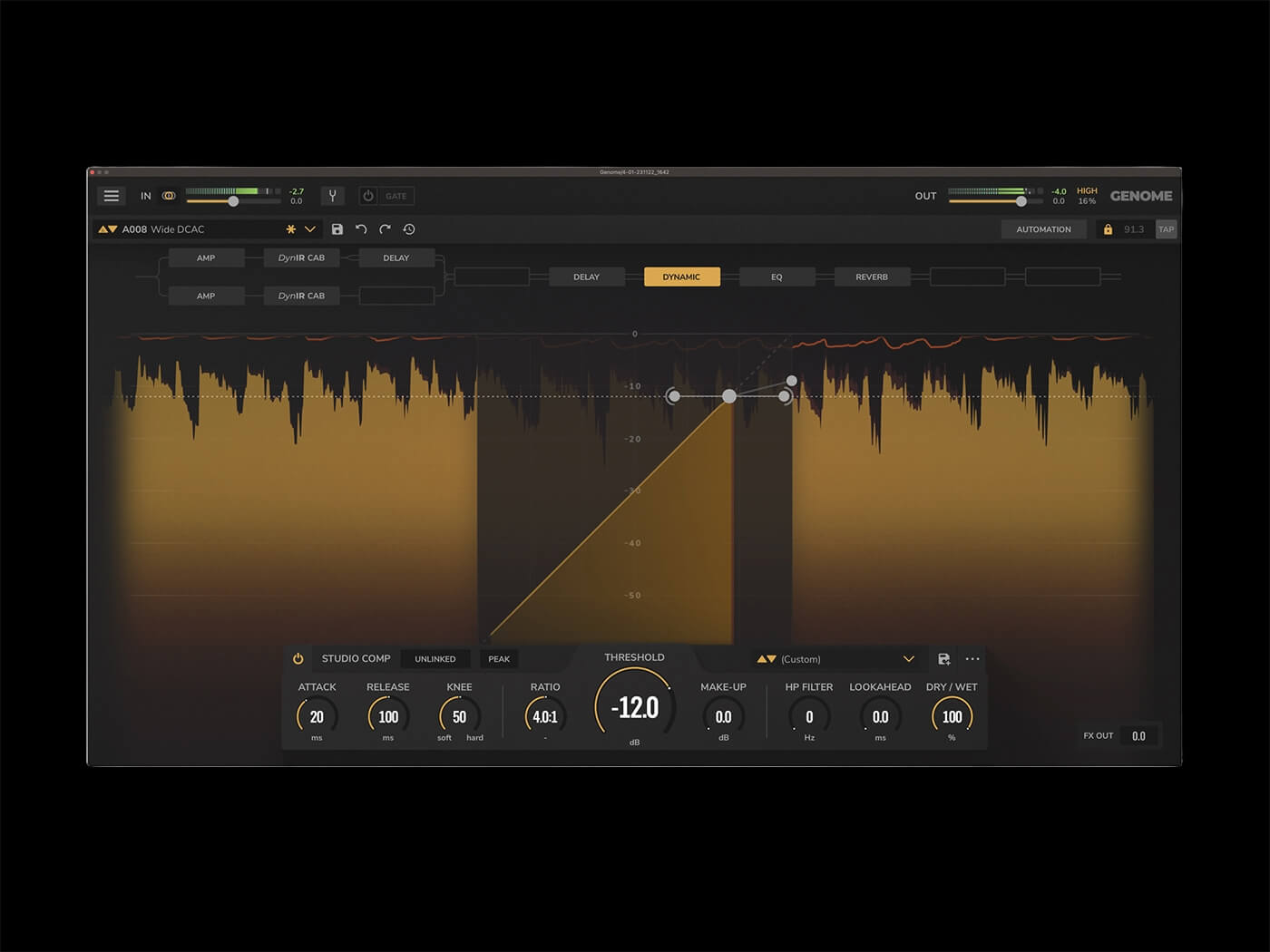
Ease of use
Genome’s UI is fairly self-explanatory, and if you’ve used basically any other guitar plugin before, you’ll get your head around what’s going on pretty quickly. At the very top you’ve got some basic input/output monitoring and level control, and buttons for the tuner and noise gate. Above the view of whatever virtual gear you’re focusing on, there’s a left-to-right signal chain of 10 blocks.
Interacting with this UI is intuitive: blocks can be reordered by dragging them around, and switched out with a drop-down menu, and the virtual gear’s virtual controls are all clearly laid out and easily adjustable. You can split the signal chain into two parallel chains and then choose where it merges, and also pan and mix the two streams. It’s very easy to get your head around, and it all happens quickly and responsively.
Using Genome I never feel lost at all – not even in the preset loading menu, which lets you select from a veritable shedload of premade signal chains or save your own. Automation is relatively simple too, with controls easily assignable to various parameters.
The tuner and gate are both perfectly functional, behaving exactly as you’d expect. However right now there’s no pre-chain pitch-shifter – that can be a handy feature for changing tunings on the fly, so its absence here is a little bit of a shame. In fact, across the entire effects range, there’s nothing of any pitch variety at all (for now – future updates may change this). But how’s everything else?
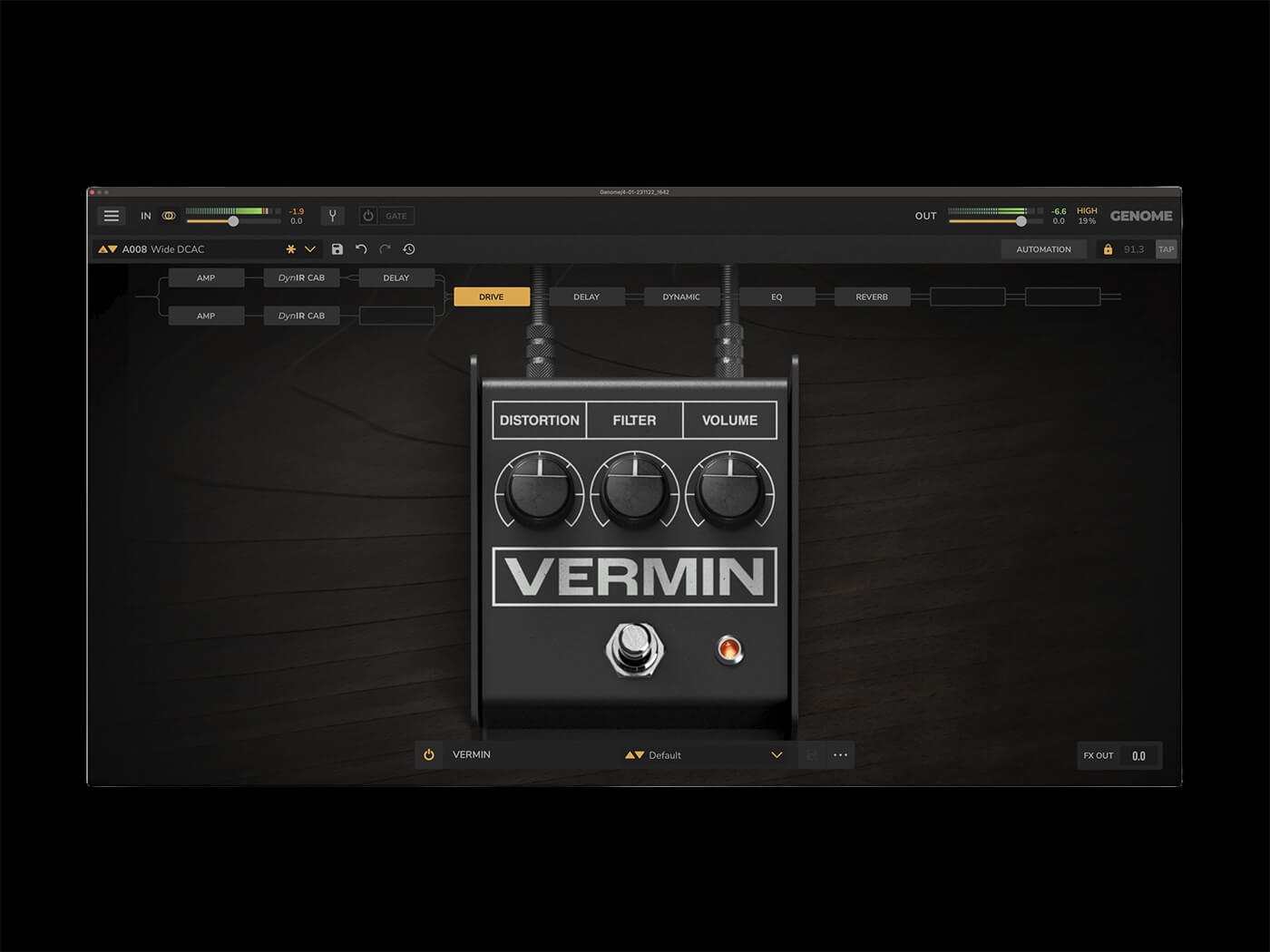
How does Genome sound?
The default starting preset is, as seems to be tradition, a super-clean Fender-inspired amp with a little compression and reverb on the end. Not the most exciting sound on the planet. However, like ordering a margherita to gauge the quality of a pizza place, the execution of the brass-tacks basics can be very telling.
Here, I find the Fendery clean thing very well-executed indeed – there’s a liveliness that indicates some attention to detail has been paid to what makes a clean tone not totally boring to play. Two Notes has past experience with this particular sound: its long-time flagship hardware cab sim unit, the C.A.B. M+ unit came loaded with just a single Fender-inspired preamp model, so its success here is unsurprising.
The clean tone would go great with a spring reverb, but if you do want a portion of that surf-flavoured dipping sauce, the two available spring emulations are part of the ‘paid extra’ side of Genome. It’s $20 for the basic spring emulation, $50 for the more complex one. Though it’s worth noting that compared to other similar guitar plugins, Genome is fairly affordable off the bat – and so while some paid extras in the form of some of the cabinets, amps and effects might initially seem like a sting in the tail, it allows the plugin to function as a more affordable bare-bones platform, with a more focused approach to expandability.
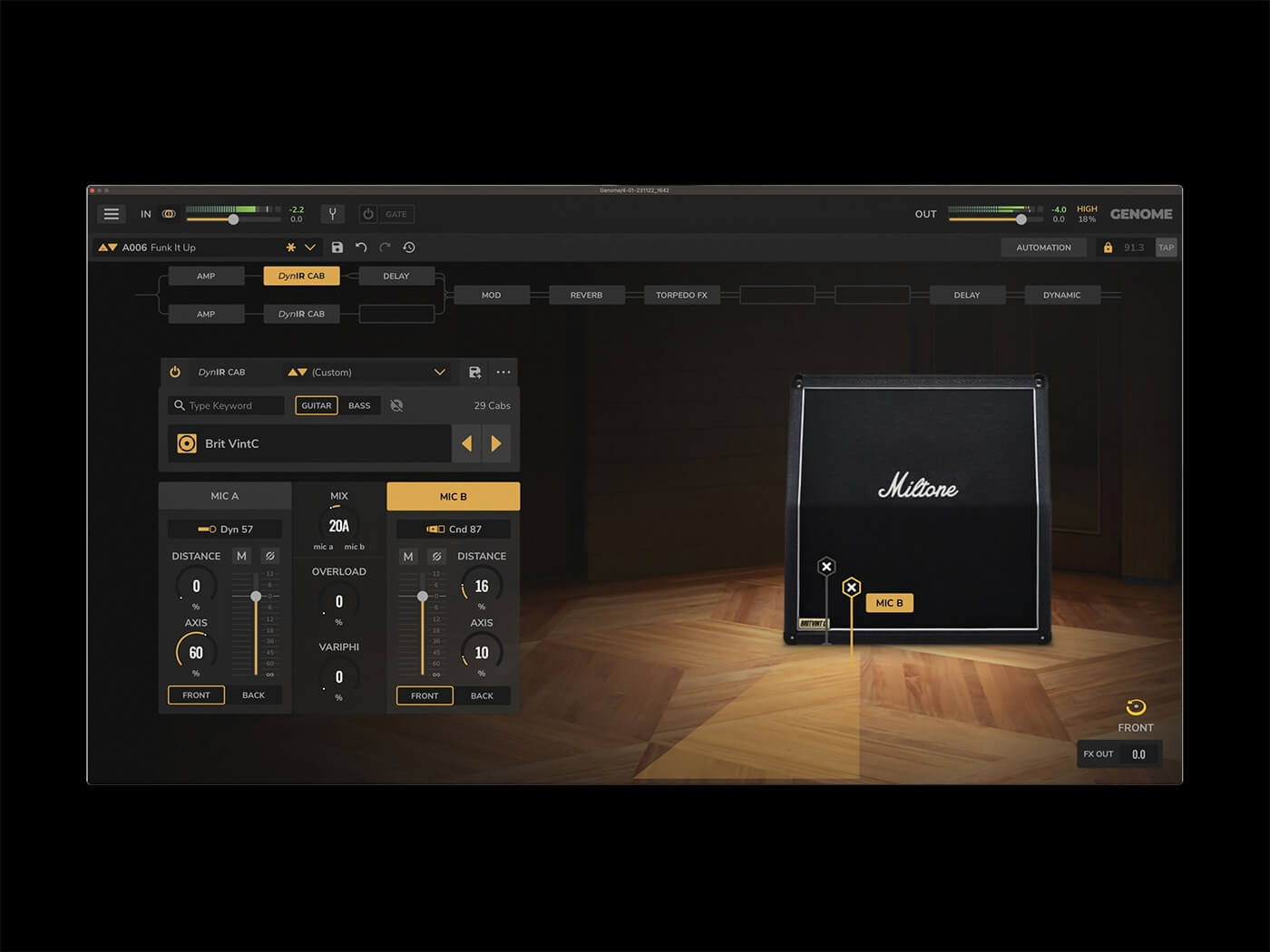
In some ways this makes it more enticing than a pricey yet complete sandbox of infinite options – with the base option being cheaper, you’re likely saving money as long as you know what you want to expand out into. To help in this regard, paid-for effects can be demoed within the software.
Moving onto some higher-gain sounds, things remain realistic-sounding and familiar-feeling. Virtual fuzz and overdrive pedals interact with virtual tube amps as you would expect their real counterparts to do – a RAT before an Orange gives woolly midrange saturation, and a Tube Screamer before a 5150 gives tight modern metal. Across the board, the amps are just, well, good – and that’s before we smack into the cresting iceberg that is CODEX. More on that in a second.
The cabinet, er, cabinet is well stocked, and of course has room for your own IRs of choice. But Two Notes’ DynIR captures are another one of its strengths, and it’s with these that I find the most instant tweakability. Various mic models and positions provide the sort of continuous tone-twiddling that, when I’m building a preset from the ground up, makes it easy to achieve a natural sound.
Splitting the signal chain is very useful here, too – we all know parallel drive sounds can be fun, but mixing, matching and panning different DynIR captures led to some almost completely mix-ready tones out of a single guitar track.
It’s worth noting that the effects and amps selection aren’t as overwhelmingly huge as some plugins’ libraries – however, in practice I often found that beyond a certain point all that really does is increase option paralysis without actually making the thing more versatile.
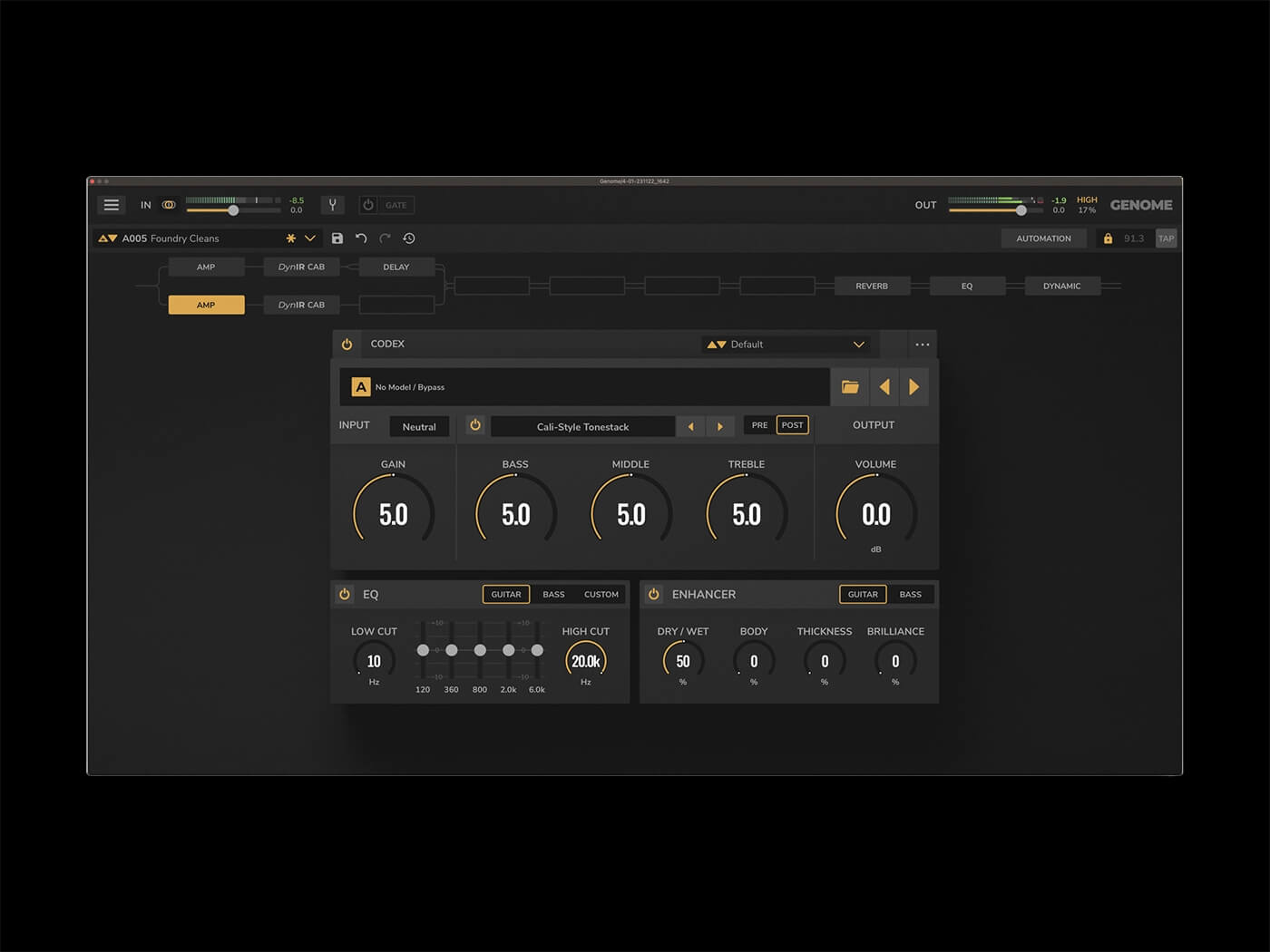
Cracking the CODEX
So, onto the CODEX amp block. This is perhaps the unsung hero of Genome, as it has the potential to glue various bits of a digital setup together in a very seamless and cool way. Compatible with Neural Amp Modeller (NAM), AIDA-X and Proteus formats , it allows you to load these amp/pedal captures, shape them with some extensive EQ, level and gain controls, and treat them as you would any other block within Genome.
While Two Notes is indeed offering paid extras to expand Genome, AIDA-X, NAM and Proteus are free and open-source processes – it’s pleasing to see standards based on so much flexibility and free sharing of captures integrated seamlessly into a more expansive and considered plugin. If you’re already using any of these capture formats, the CODEX aspect of Genome should make it a very appealing prospect indeed, as it allows for an efficient and controllable way of integrating them into a live or recorded workflow.
Who is Genome for?
As mentioned, the sounds from Genome are pretty damn good, and it seems Two Notes plans to add more free and paid gear with updates. But, right now, it’s still very comprehensive as a plugin – really, if you were looking at something like ToneX but the price tag was putting you off, you might find Genome offers a more affordable and focused alternative. The seamless compatibility with third-party amp captures is great to see, too – and there is a free trial, so, if you’re curious, why not have a try yourself?
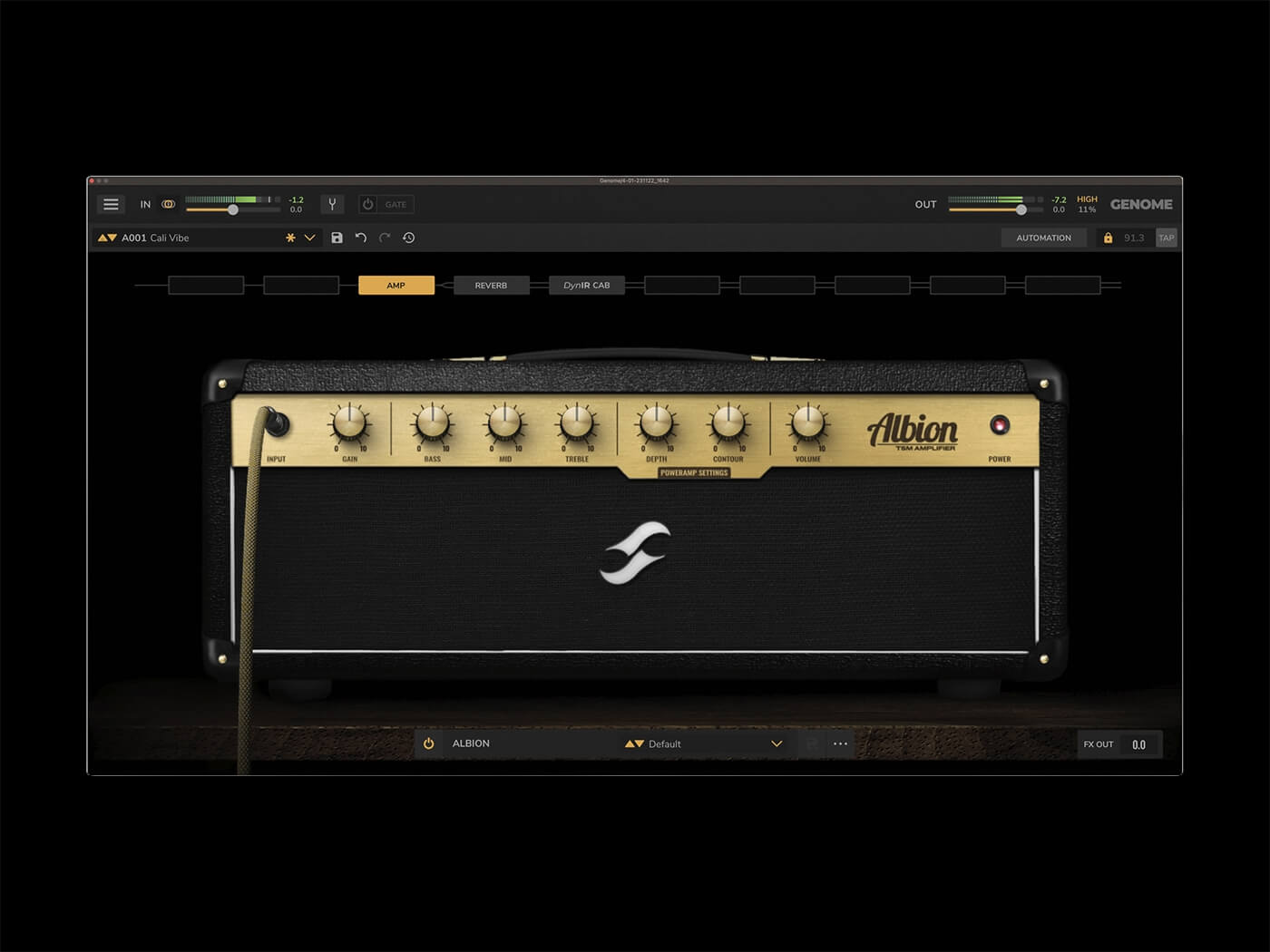
Two Notes Genome Alternatives
As mentioned, ToneX (€199.99) is perhaps the most obvious competitor, and its tiered pricing might or might not work better for you than Genome’s approach to expandability. There’s also Guitar Rig, Positive Grid’s BIAS AMP 2, and – if you want a very focused set of virtual gear – Neural DSP’s various suites.
Cillian is Guitar.com's Senior Staff Writer, and has written news, features and reviews for Guitar.com since 2019. When not writing about guitars, Cillian spends their time building and modding pedals, rearranging their pedalboard and extolling the virtues of the ProCo RAT.
